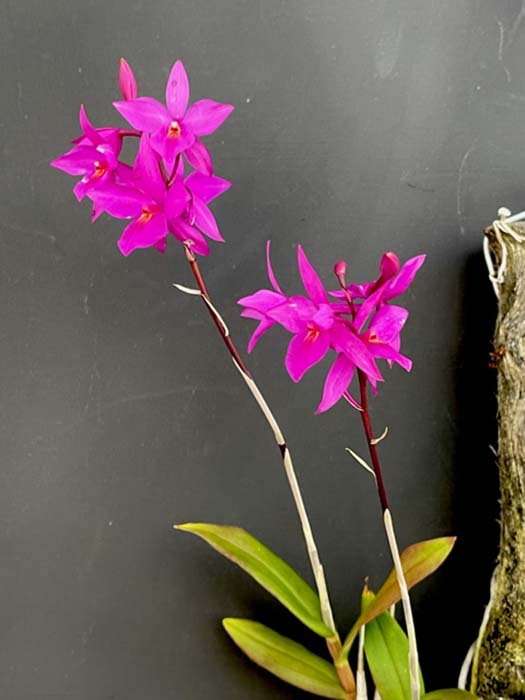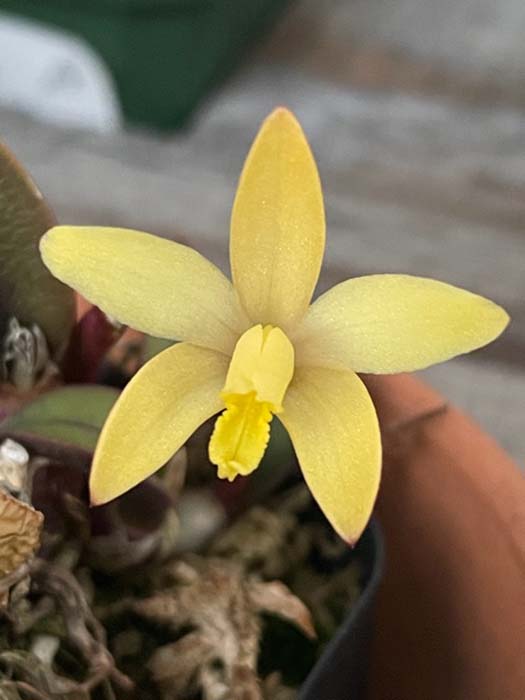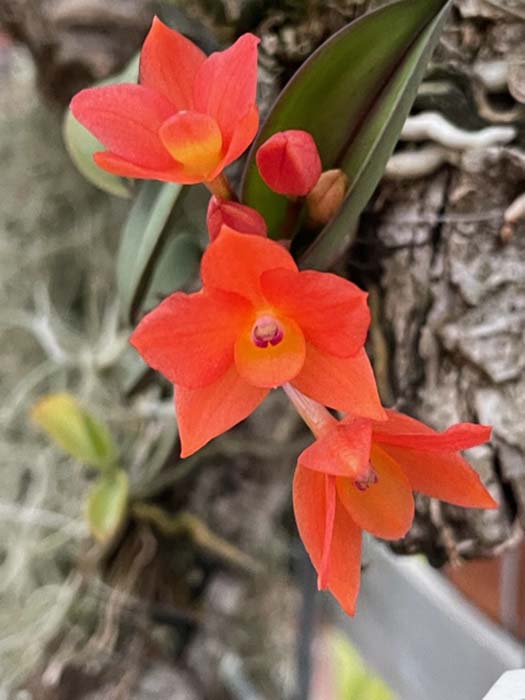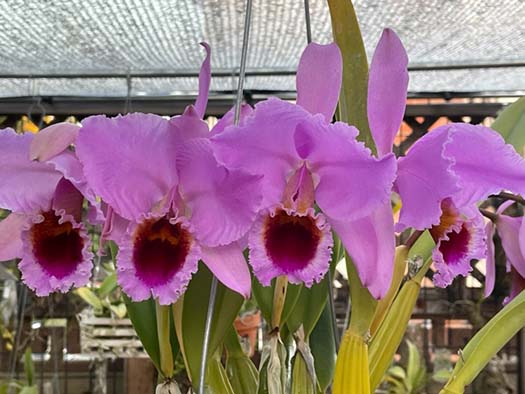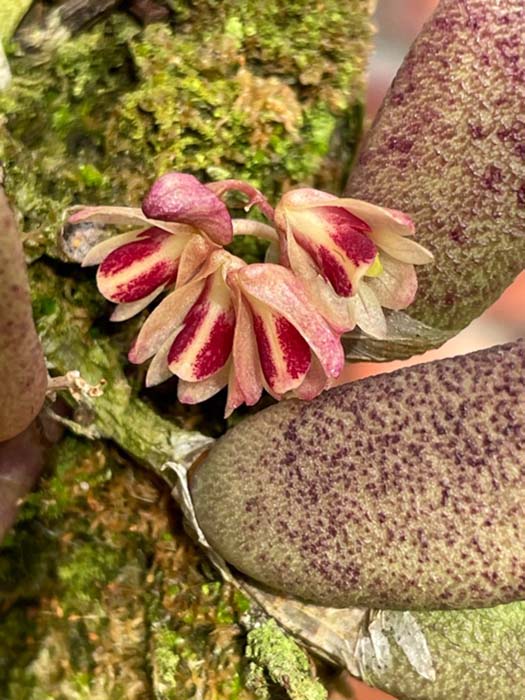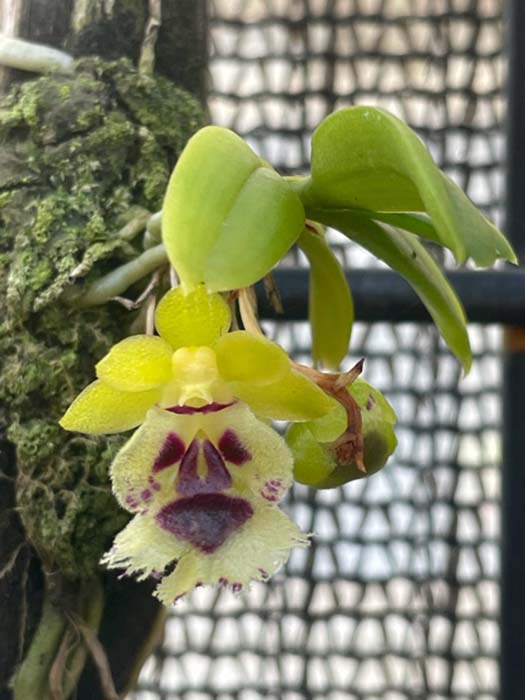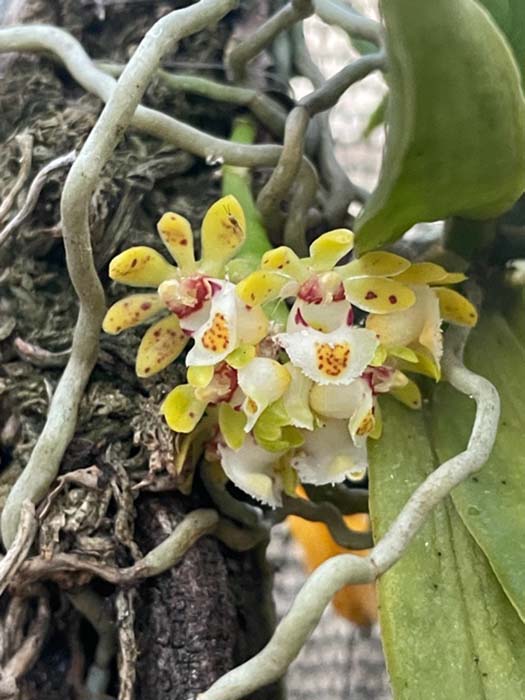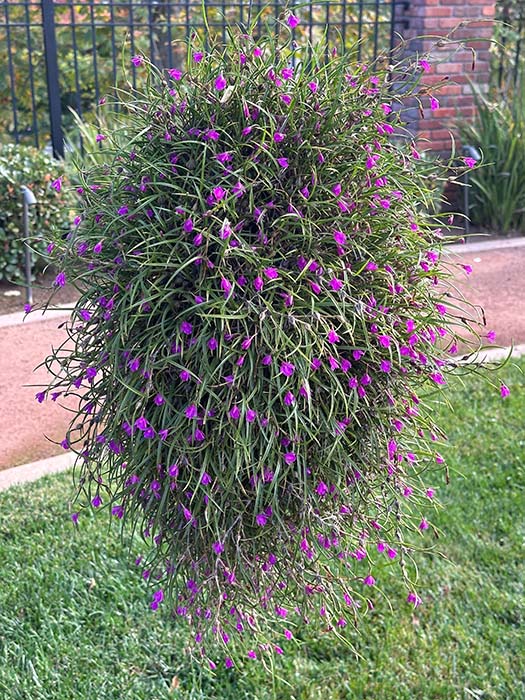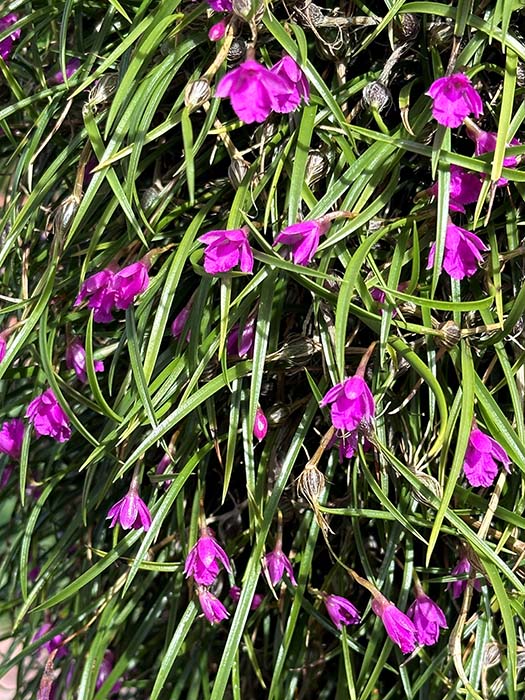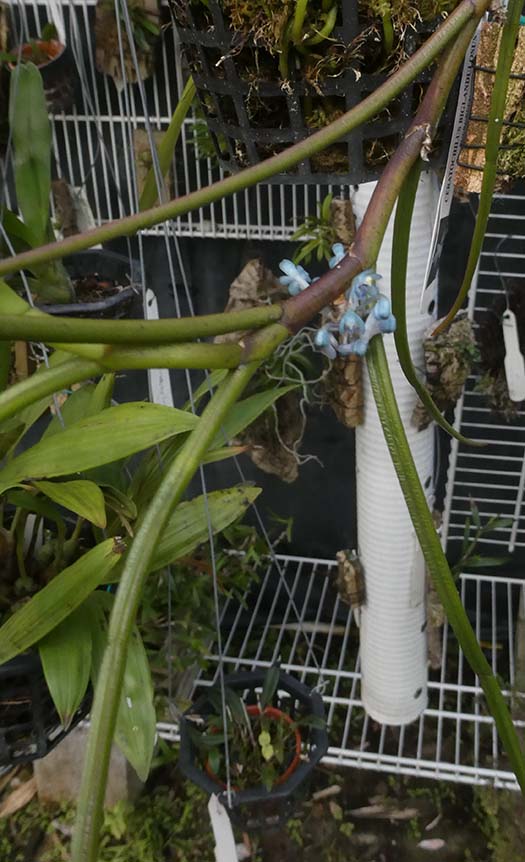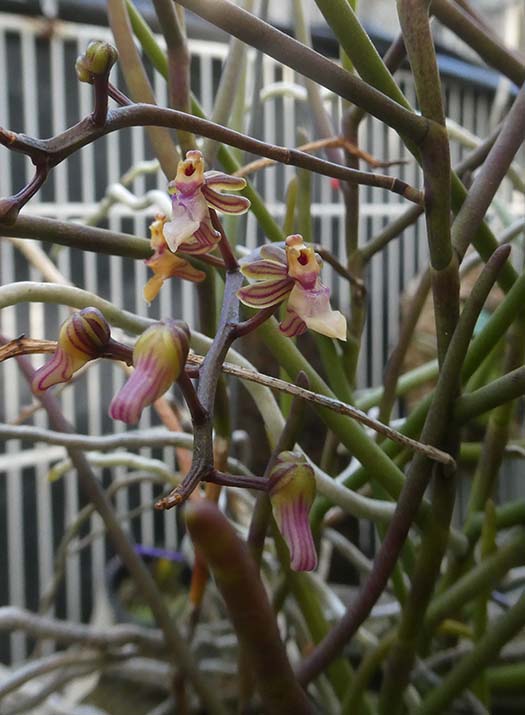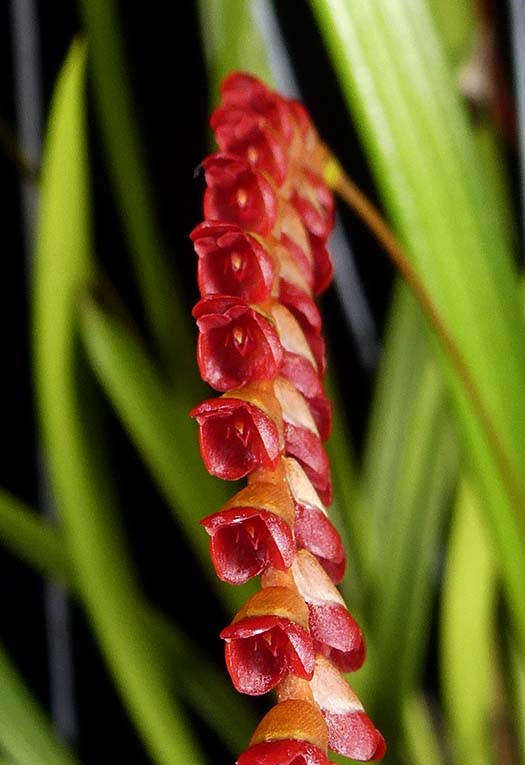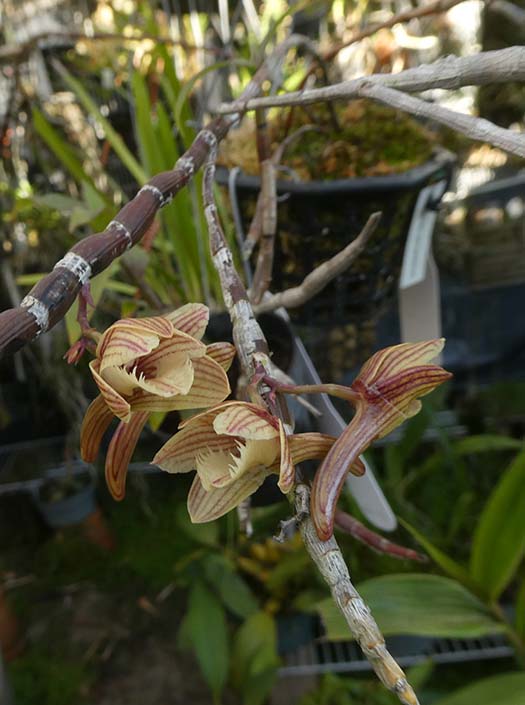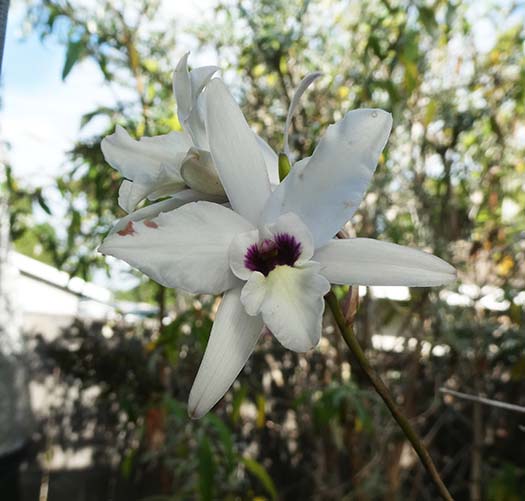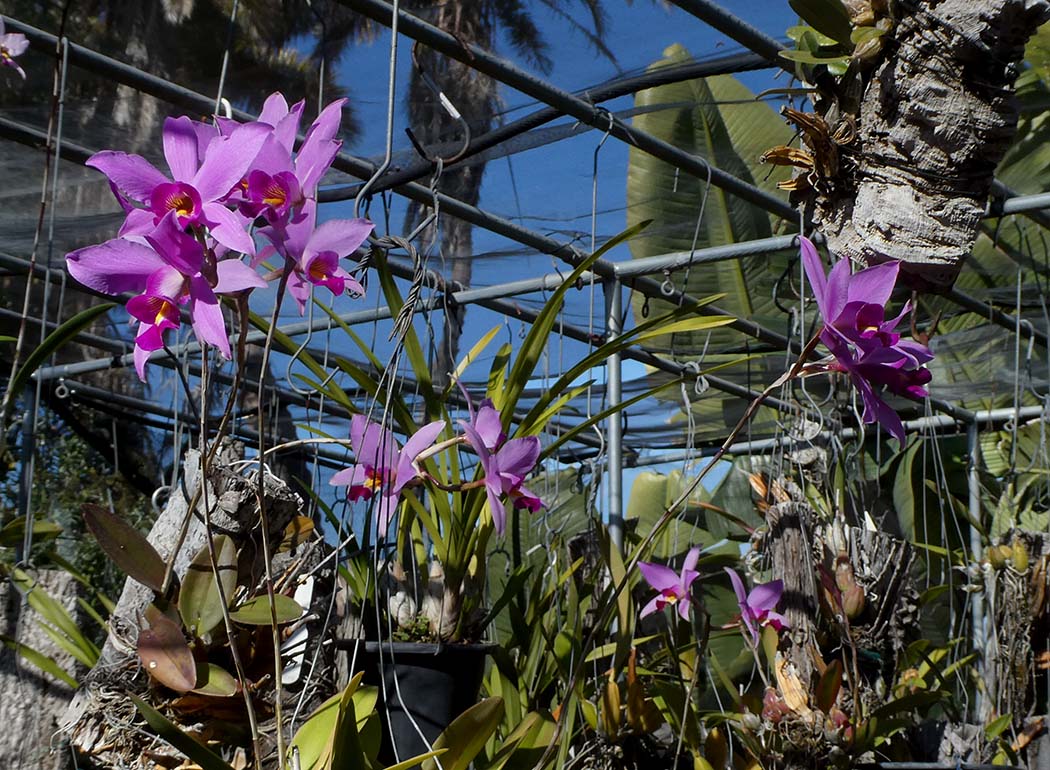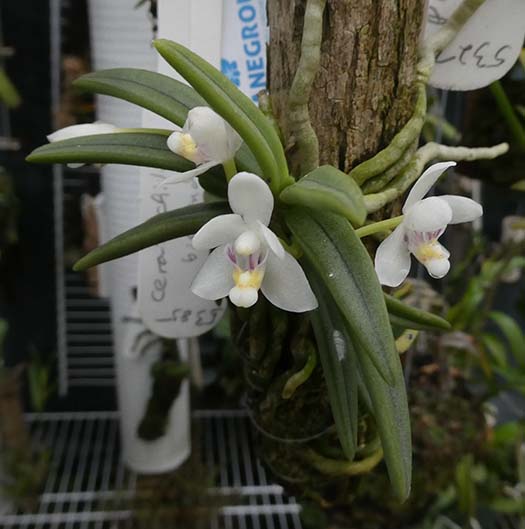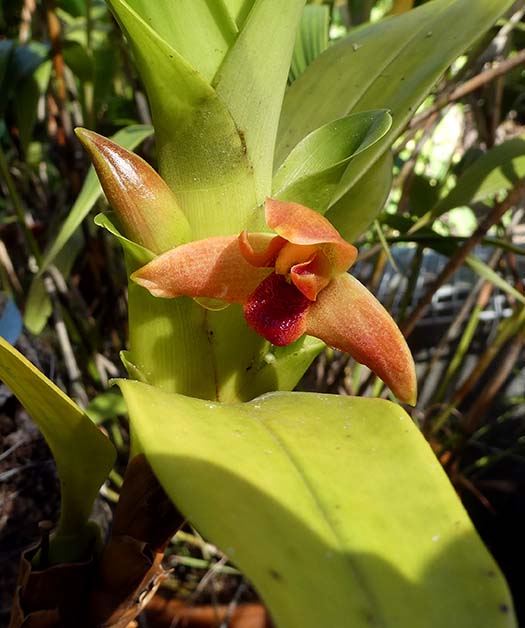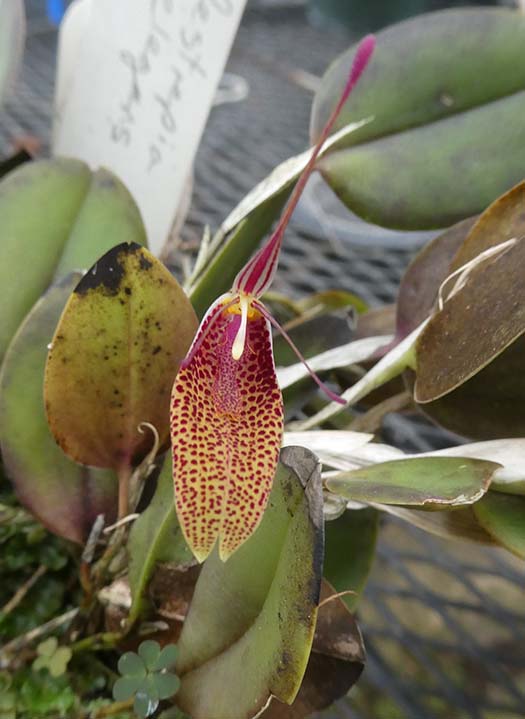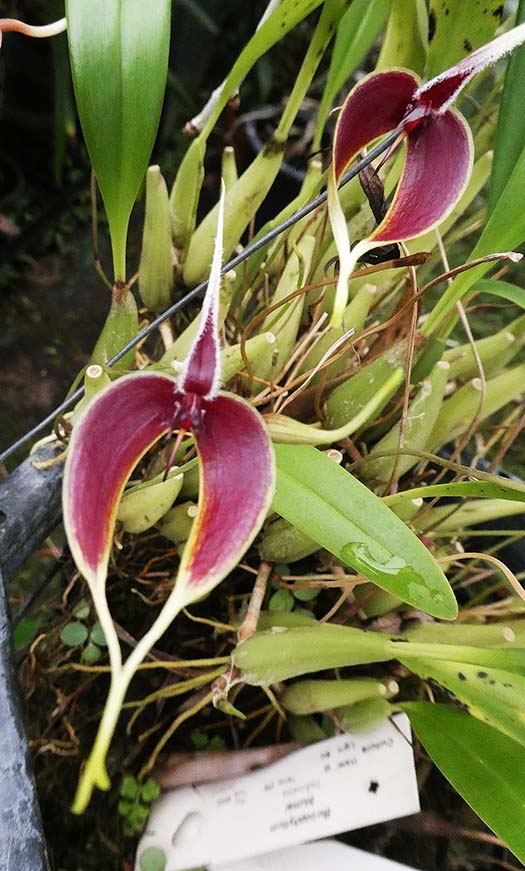January 2024
From Kurt Shanebeck:
|
|
Outdoors coastal, north of Los Angeles: |
|
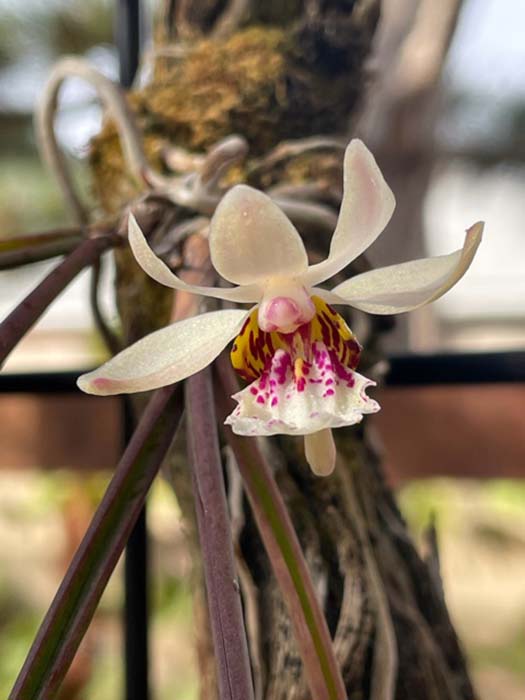
Holcoglossum wangiiEpiphyte native to Southeast Asia. Growing mounted with bright light. For me, while it has bloomed reliably growth has not been exactly vigorous. |
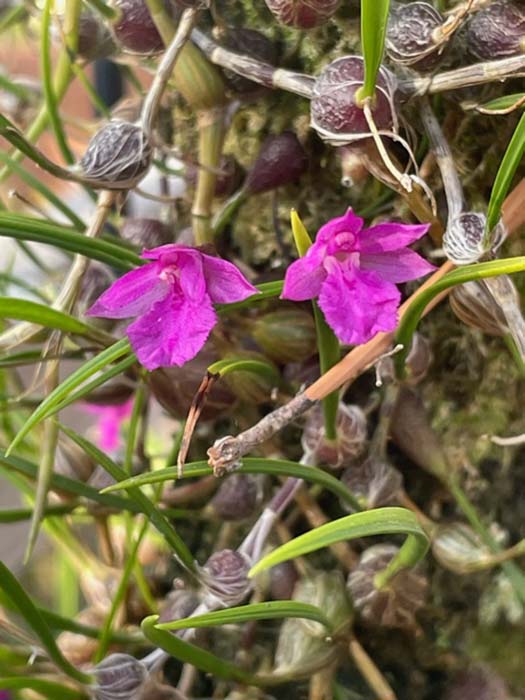
Isabelia pulchellaEpiphyte native to Brazil. Growing mounted with bright light. |
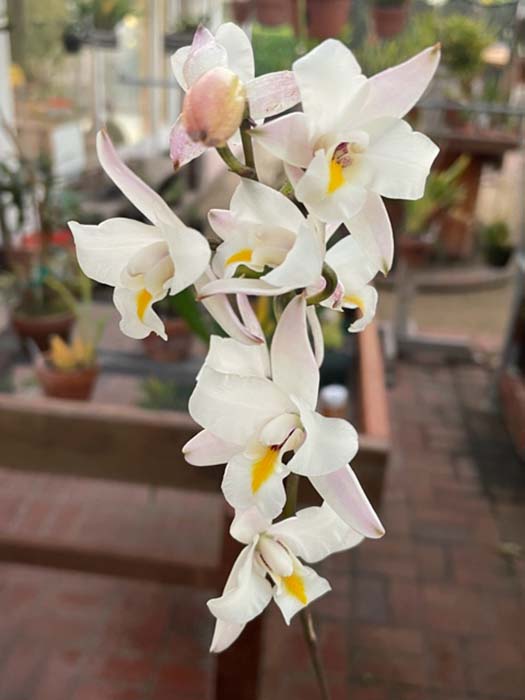 |
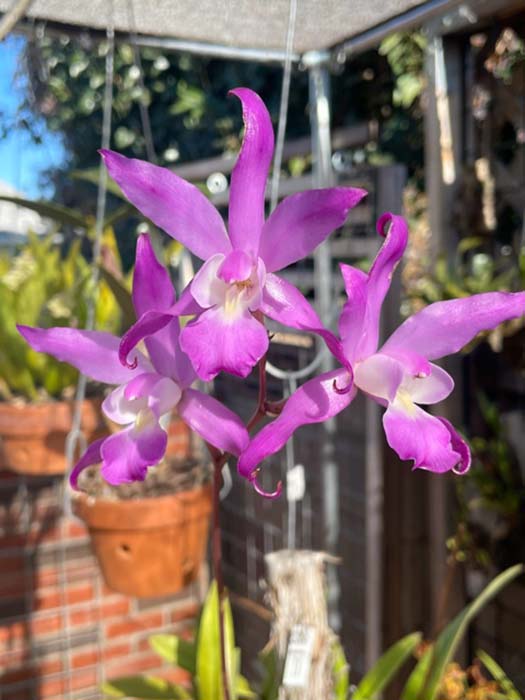
Laelia autumnalisNative to Mexico. Growing mounted with bright light. |
Laelia albidaMexican epiphyte growing mounted with bright light. |
|
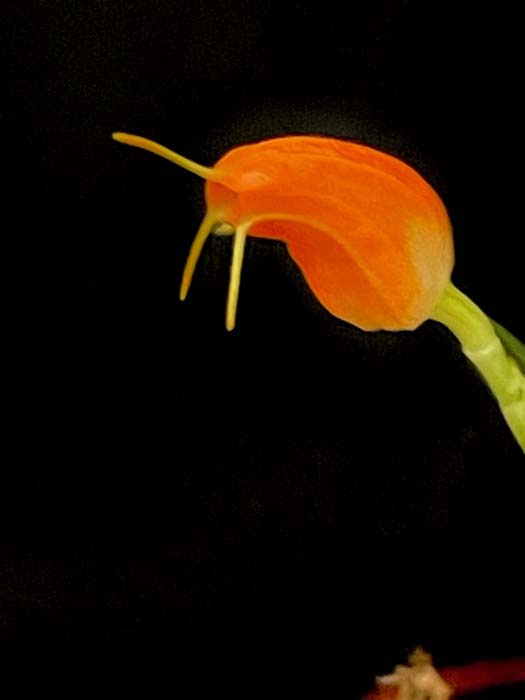
Masdevallia limaxNative to Ecuador. The shape resembles a slug—hence the name limax, Latin for slug. |

Mystacidium venosumEpiphyte native to Southern Africa at elevations to 1700m. Growing mounted with bright light. |
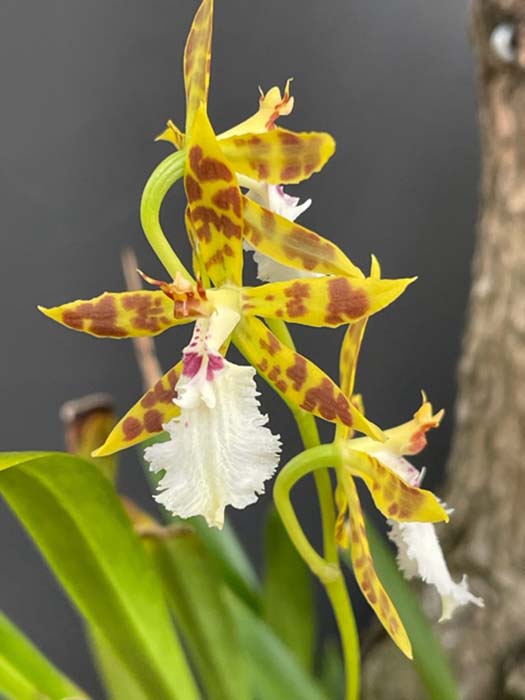
Oncidium aspidorhinumEpiphyte from cloud forests of Columbia and Ecuador at elevations of 2000-2800m. Growing mounted with moderately bright light. |
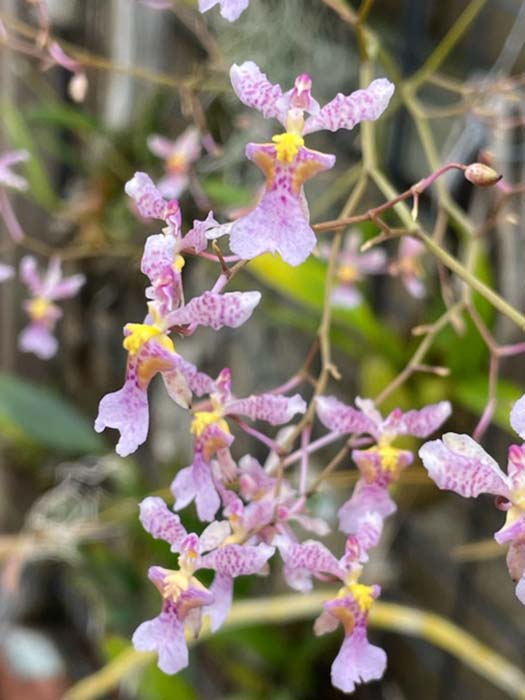
Oncidium iricolorEpiphyte from Mexico at elevations of 1000-1700m. Growing mounted with bright light. |
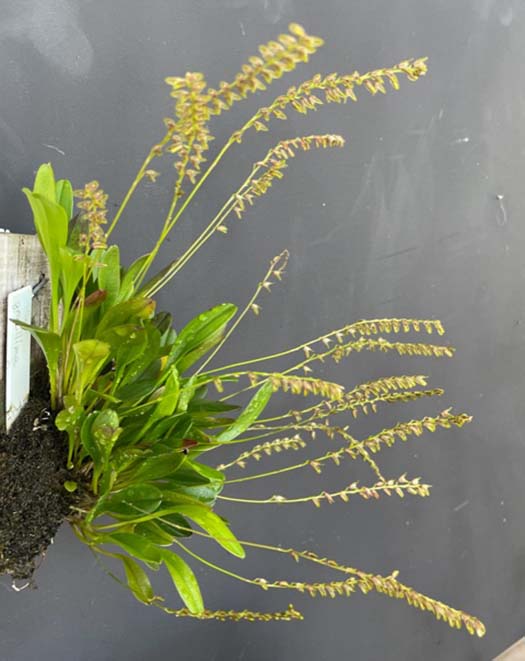 |
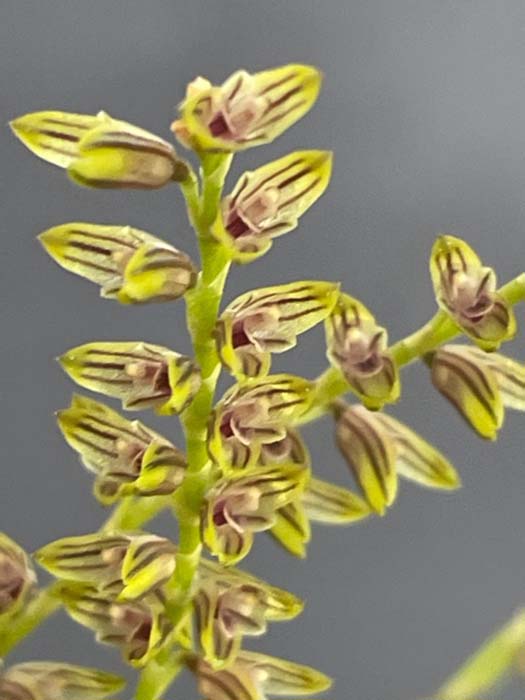 |
Specklinia gracillimaEpiphyte from Columbia and Ecuador at elevations of 1400-3000m. Growing mounted, shady and moist |
|
 |
Restrepia brachypusGrowing mounted on tree fern with moderately bright light. |
From Scott McGregor:All orchids grown outdoors, coastal southern California |
|
Isabelia pulchellaOne of my favorite plants! I acquired this as a much smaller plant about ten years ago, gracefully draped over an inverted 2” clay pot. It is still over that same 2” pot, but it is really just growing in air at this point, with the pot mostly an anchor for the supporting wire. The flowers are small (1/2”) but very colorful, especially when grown as a specimen. This plant grows well outside if given bright light, mounted (it doesn’t like pots), and watered frequently. The plant is about 26” in diameter and 34” high. I rotate it so that it grows evenly all around. |
|
Laelia gouldianaA robust outdoor grower that reliably puts on a good show. Not for small spaces and gets quite large. It is sadly now extinct in its native Mexico. |
|
Laelia superbiensSomewhat of a monster—a large plant with a cluster of flowers on a spike that can be more than six feet long. Good outdoor grower, if you have the space! |
|
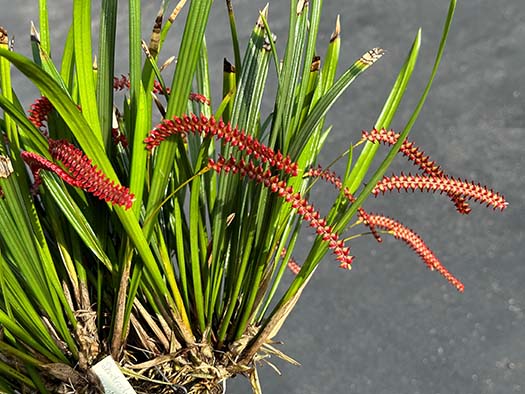
Dendrochilum saccolabiumThe individual flowers aren’t much, but the long grass-like spikes are colorful in winter. |
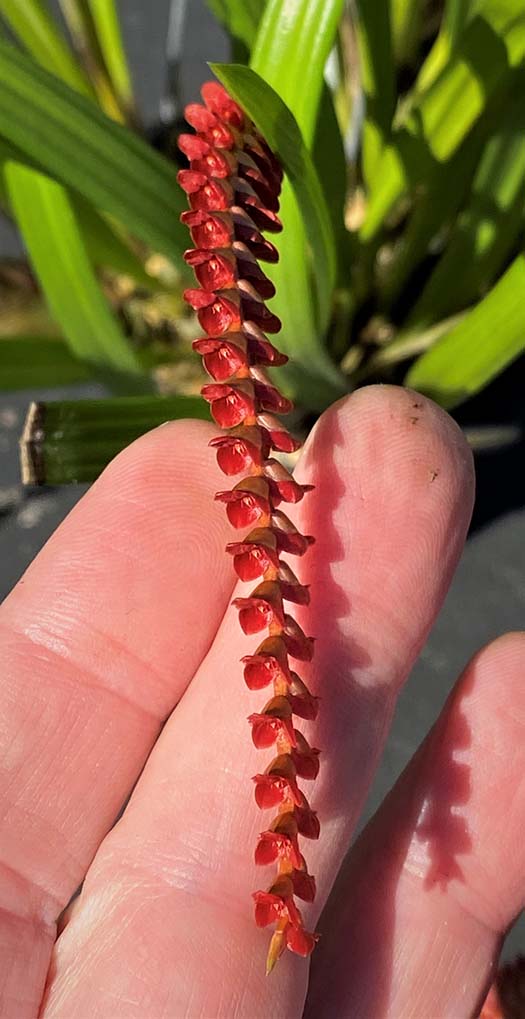 |
From Roberta Fox:Coastal southern California |
|
Outside in the Back Yard: |
|
 Cleisocentron merrillianumSeveral species in the genus have truly blue flowers. These are almost blue-green. (Color is accurate, photographed in sunlight.) This species is characterized by long, terete leaves. The more common Cleisocentron gokusingii (will be in bloom next month) has shorter, semiterete leaves. (There are a lot of Clctn. gokusingii plants mis-labeled as Clctn. merrilianum). Found only in Sabah, Borneo, at elevations 1100-3000 m. |
|
Cleisostoma simondiiNative to a wide range of northern India and southeast Asia, elevations from 100 to 1000 m. (So can grow warm or cool). It sends out growths in all directions, doesn't stay on a mount. Mine is now growing in a basket with no medium, the basket just contains it and provides a way to hang it. Small flowers but lots of them, and basically no care beyond the basics. |
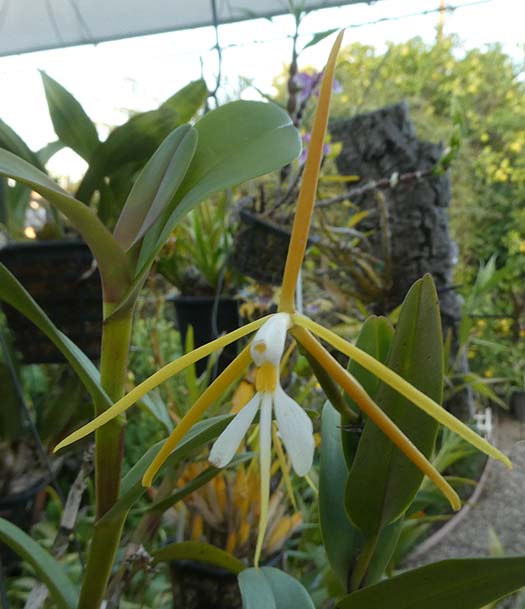
Epidendrum nocturnumGrows over a wide range of elevations on both sides of the Andes. I have seen it at high elevations in Ecuador, and along the very tropical Rio Negro in Brazil. Can grow warm or cool. It can bloom several times a year. |
 |
|
 |
|

Dendrobium glomeratum (sulawesiense)This is supposedly a warm grower, but does fine on my patio, so clearly there are higher elevation populations. It is native to New Guinea (both Irian Jaya on the west and Papua New Guniea on the east) The bright orange lip contrasts with the intensely-saturated hot pink flowers. In the direct early morning sun especially (above) the flowers seem to glow. |
 |
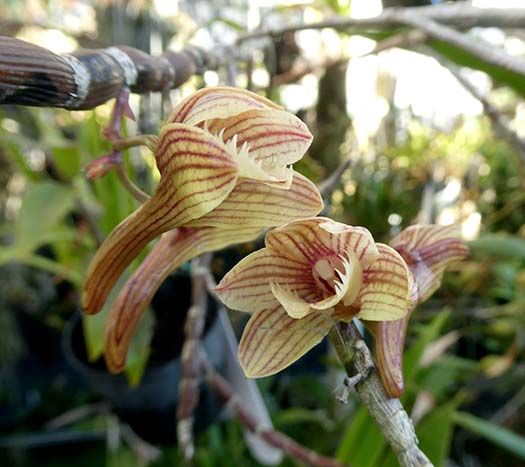
Dendrobium serratilabiumNative to the Philippines. Baker indicates that it is a relatively low-elevation species, and IOSPE also says it comes from lowlands, but it does fine on my patio. So clearly there are higher elevation populations. It blooms on bare canes, doesn't seem to ever have many leaves. It doesn't get dried out in winter any more than the general collection, but does experience cold, and that seeems to be sufficient for blooming. |
|
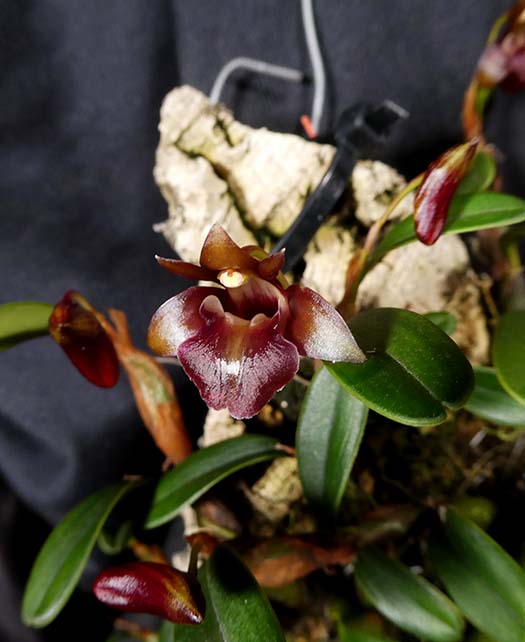
Epigeneium clemensiae (Dendrobium mariae)Like other Epigeneium species, the mount is just a starting point. It tends to grow off the mount, into the air, and those free-ranging growths are very vigorous. It is native to south-central China, also ranging into Tibet and Vietnam, at elevations 1000-1300 m. The genus got lumped into Dendrobium (and for this one the species name had to change too) , but its growth habit is quite different.
|
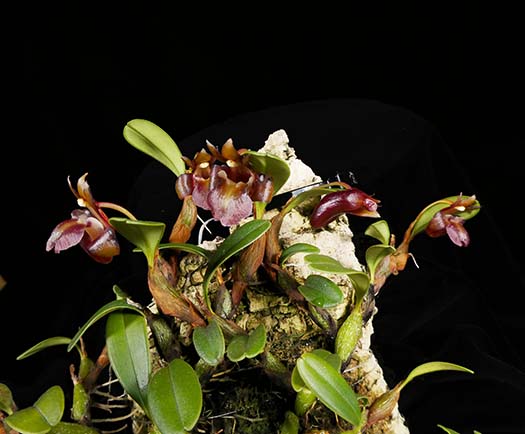 |
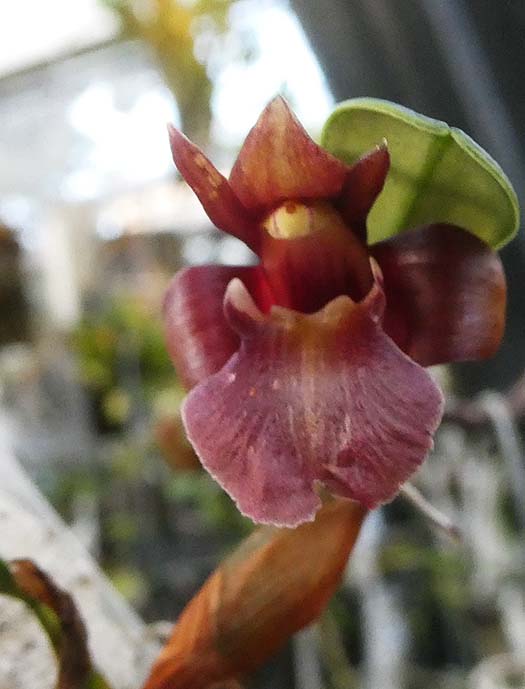 |
|
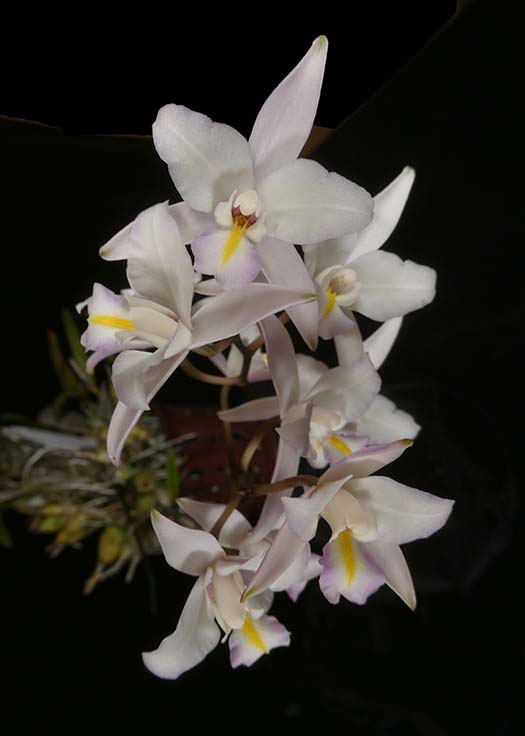 |
|
Laelia albidaA floriferous species from a wide area of Mexico, elevations 1400-3500 m. |
|
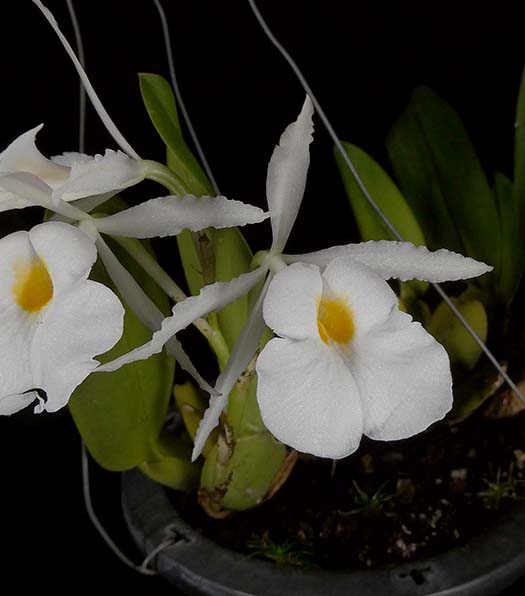
Trichopilia fragransNative to much of northern South America, at elevations from 1150 - to 2400 m. This is the only Trichopilia species with which I have had success over multiple years. Most of them seem to be unhappy with either warm summers or cool winters or both. This one is a survivor. It lives up to its name, especially in the evening, with a pungent, sweet aroma.
|
|
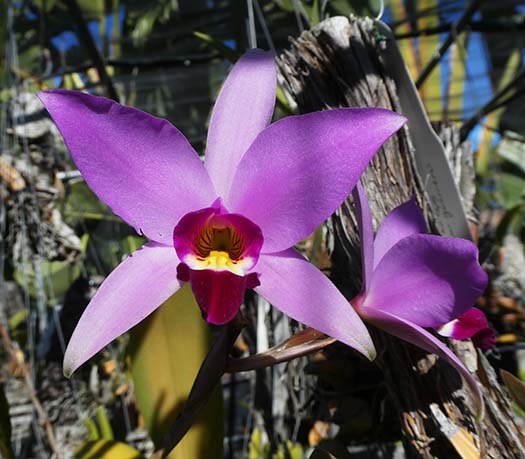
Laelia ancepsSeveral plants are blooming at the sme time. Here are closeups of just two. Other color forms will bloom later, it is "pink time". This is one of the easiest species to care for in southern California. They tolerate cold down to freezing, heat over 100 deg. F., and are quite drought-tolerant. |
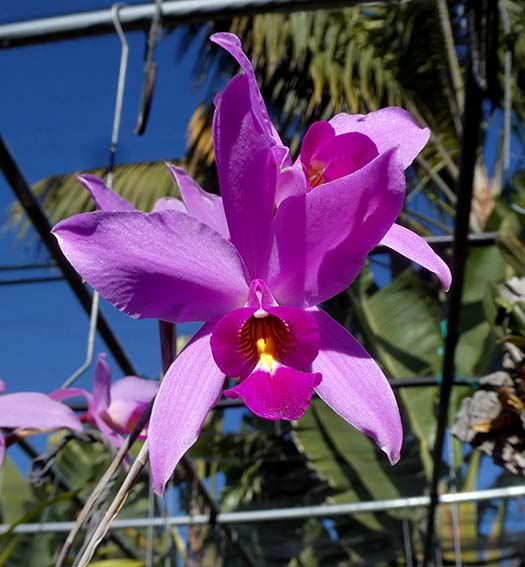 |
Brachypeza semiteretifolia (Pteroceras semiteretifolium)Native to Vietnam, elevation around 1000-1500 m |
|
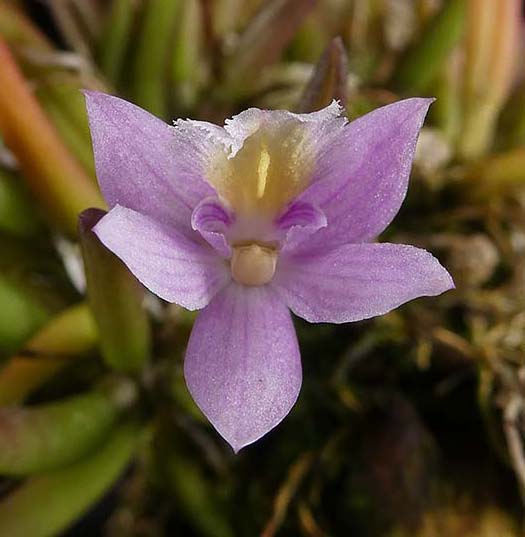
Leptotes harryphillipsiiFrom southeastern Brazil. For a number of years, this was considered to be synonomous with Leptotes pauloensis. Within the last few years, it has been accepted by Kew as a distinct species. Of my several Leptotes species, this is the only one to brighten the winter, the others tend to bloom in early spring. The flowers open in various directions, but most are non-resupinate (lip upwards). |
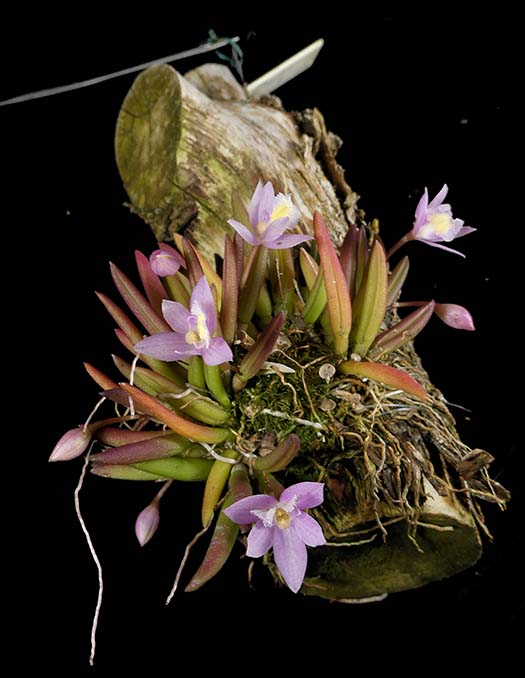 |
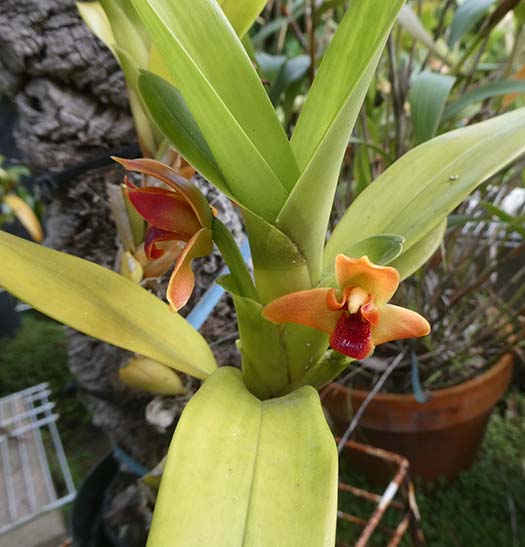
Maxillaria elatiorFlowers are almost waxy, and quite long lasting. They appear between the emerging leaves of new growth. Native from Mexico to Costa Rica, elevations 400-1500 m. |
|
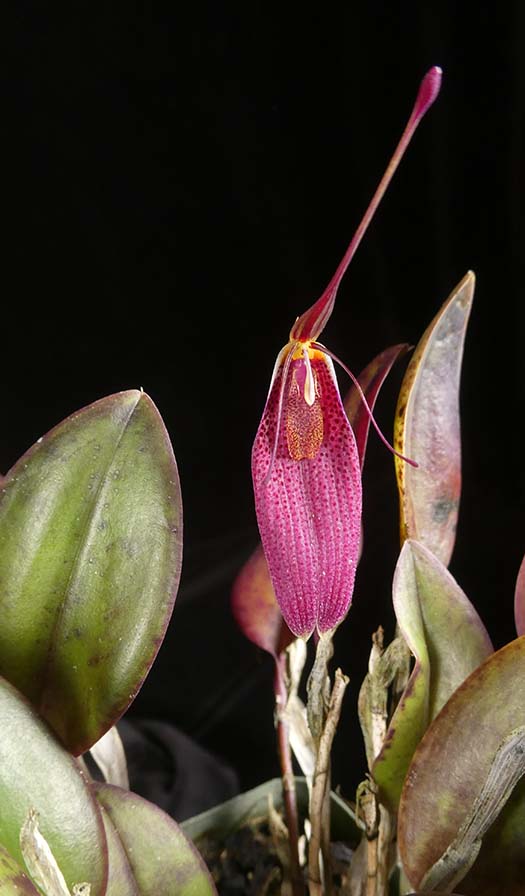
Restrepia sanguineaColonbia, 1500-2590 m. This plant usually produces a flush bloom in February or early March. Maybe it still will, but in December it is producing them one at a time.
|
|
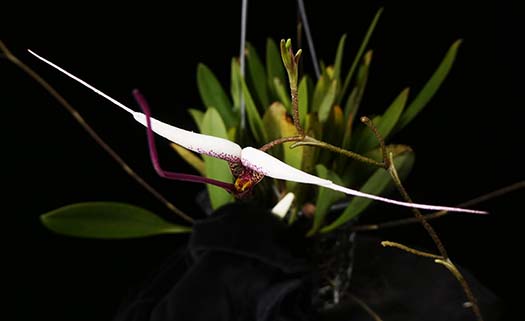 Scaphosepalum gibberosumFlowers are huge for the genus. These are 3.5 inches tip-to-tip, and the lip is about 1.5 inches. At the moment, the plant has 3 inflorescences, which each bloom sequentially. So far, I get one that is just finiishing, one fully open, and one just starting. Perhaps they'll eventually time it for a flush bloom, but I'm not complaining. A given inflorescence can continue to produce flowers for many months. From Colombia, 1600-2000 m. |
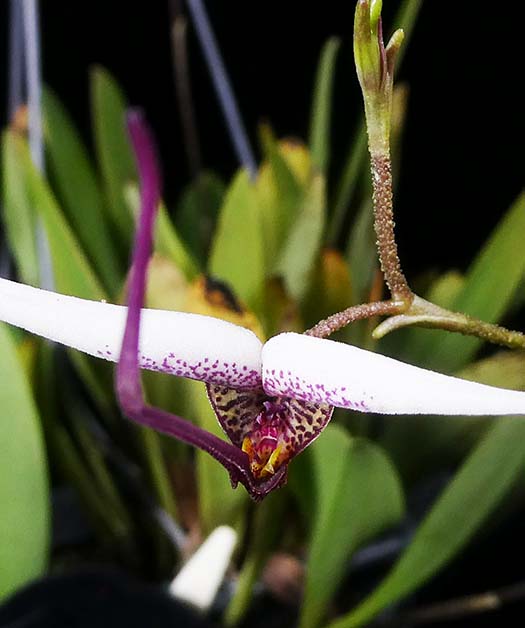 |
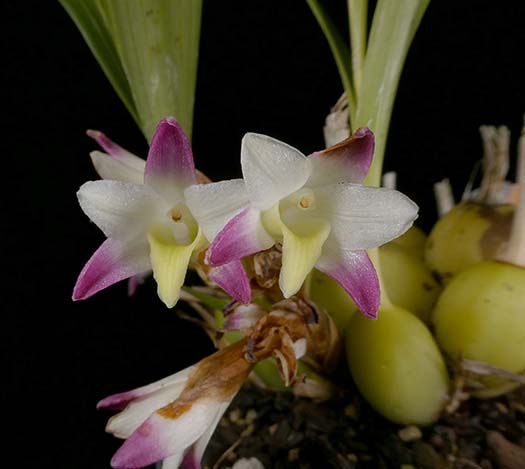
Coelia bellaFrom southern Mexico and northern Central America, elevations 100 - 1500 m. The big, round pseudobulbs drop leaves, amd then the flowers appear along with the new growth. |
|
In the greenhouse... |
|
 Bulbophyllum maxillare
|
|
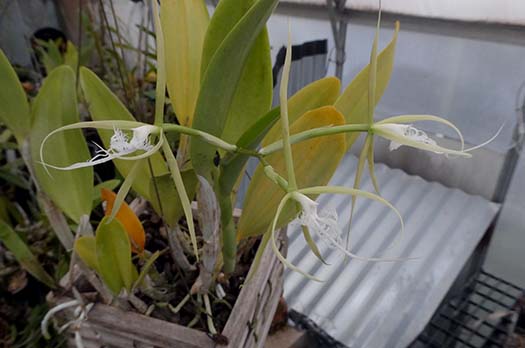 Epidendrum ciliareFrom Mexico, through Central America and the Caribbean, as far south as Brazil and Ecuador. They have been found at elevation ranges from sea level to about 2500 m. So theoreticaly these should do fine outside. However,I started growing mine outside and it did poorly. In the greenhouse it revived and is growing well. Certainly with such a wide range of locations and elevations, there are different populations with different climate tolerances. There is likely no way to determine what a particular plant of this species will tolerate except to try - and observe it, change the conditions if needed.
|
 |
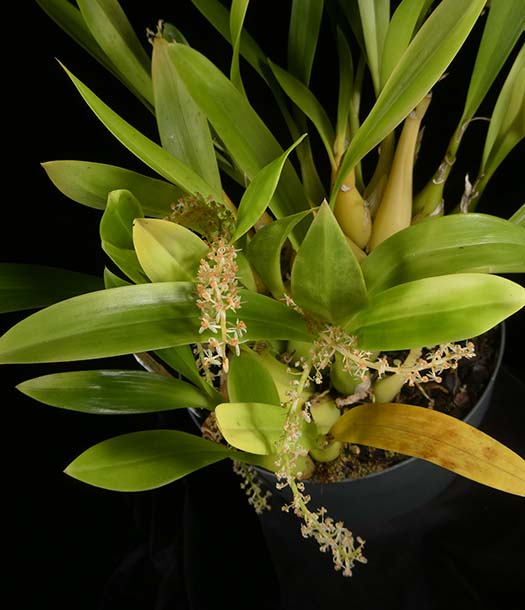 |
 |
Liparis parvifloraFrom Thailand, peninsular Malaysia, islands of Indonesia. Papua New Guinea and the Phillipines, elevations sea leavel to 2000 m. I haven't tried mine outside, it is doing so well in the greenhouse. This is another one where one likely needs to look beyond the entire range of the species to determine the culture of an individual plant. |
|
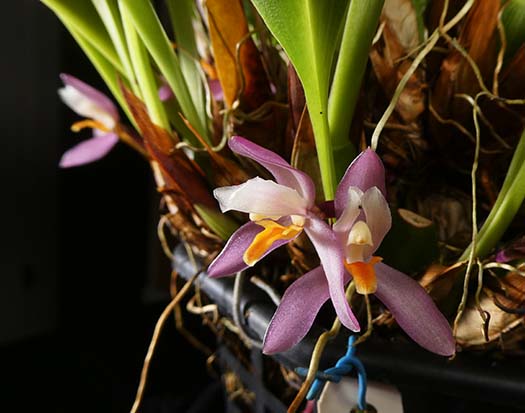 Maxillaria richiiNative to Ecuador, elevation 100-1000 m. The dusty rose color of the sepals is unusual, and the bright yellow lip provides a lovely contrast. |
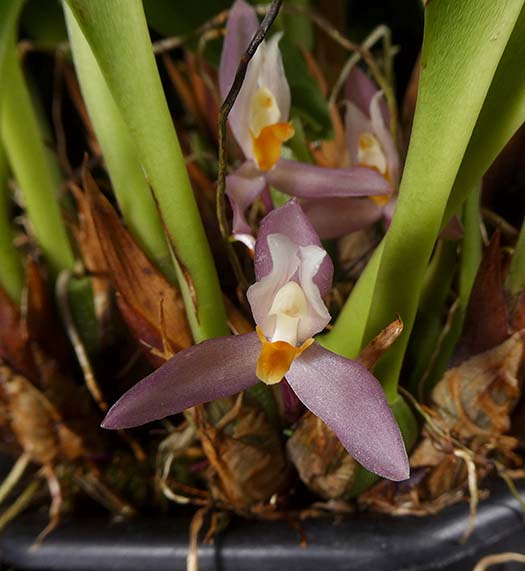 |
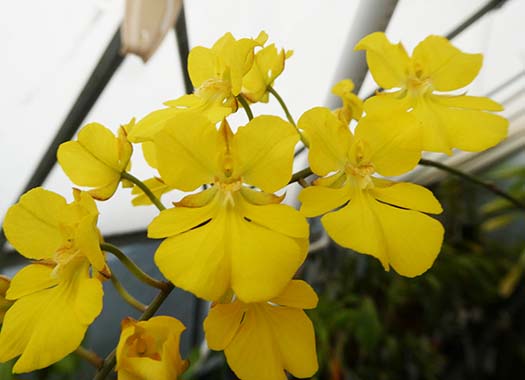 Zelenkoa onusta (Oncidium onustum)Native to western Ecuador and Peru. The habitat can be very dry - the species has been observed growing on cactus. It is generally a lowland plant but can occur up to 1200 m. I don't particularly dry it out, but it grows mounted on a cork slab with no spaghnum, so it dries rapidly after it is watered. |
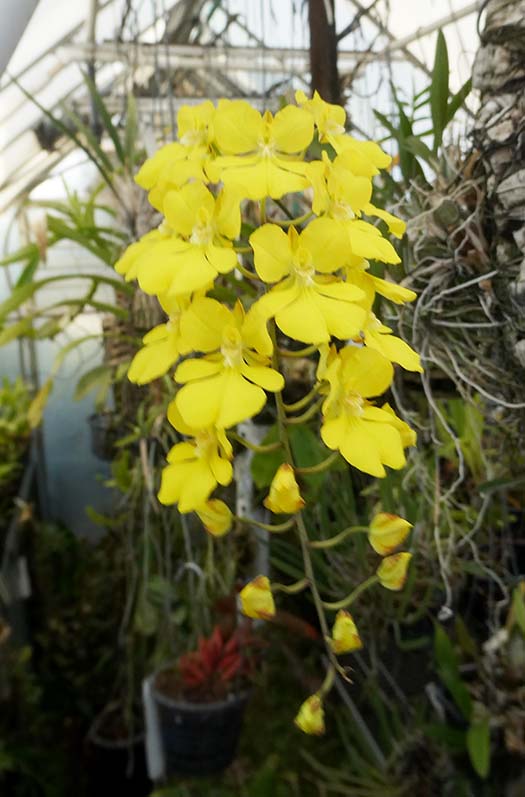 |
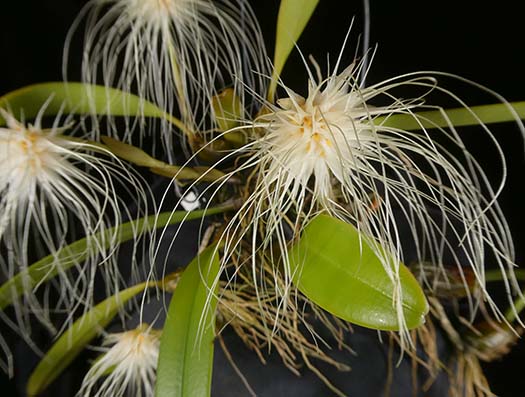
Bulbophyllum medusaeThis one was a surprise - I didn't see the spikes developing, and then there they were, all at once! This plant grows in a basket with very little medium. The humdity and frequent watering in the greeenhouse seem to be sufficient, nearly all of the new growth is in the open air. |
 |
